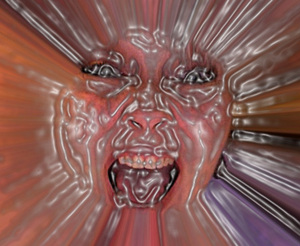Lie to Me is a new television program about a group of experts in the field of face and body analysis who assist local and federal law enforcement agencies in discovering the truth. Even something as seemingly innocuous as a slight facial movement, nearly imperceptible to the untrained eye, holds secrets that surpass even the most sophisticated lie detectors. The contention is that facial expressions reveal character.
The show also contends that character and the ability to ascertain truth are revealed not only through voluntary and involuntary facial expressions but body movements as well.
Dr. Paul Ekman, the inspiration for the show, has written several books about the subject of physiognomy and reveals that truths can be found in what he terms “micro expressions” and involuntary body language. Together with Wallace V. Friesen, and Joseph C. Hager, Ekman developed and wrote a manual and investigators guide to understanding facial behavior entitled, The Facial Action Coding System (FACS), revised in 2002. (This nonverbal communication guide costs $260 plus shipping and handling, but the comprehensive guide offers an outstanding array of tools for researching and studying the face, including tools for artificially aging a face to aid in the recovery of missing children.)
Lie to Me is more than just a show about physiognomy (the study of facial expressions denoting character), it may also be a show about phrenology (the study of skull formation and its relationship to character).
The practice of physiognomy has been around for at least 2500 years. Aristotle speculated on the relationship between external appearance and emotion, claiming that passion could be seen in the face. In the 17th century Charles Le Brun influenced the scientific community to further explore the benefits of physiognomy by comparing animal characteristics to human characteristics. Even before Charles Darwin introduced the subject of natural selection and evolution, phrenologists were comparing animals to humans. Like the movie, 101 Dalmatians, cartoons and television commercials sometimes depict people whose animals demonstrate a peculiar likeness to their owners.
Orson Squire Fowler and his publishing firm, Fowler and Wells, published many books on the subject and promoted his beliefs to the general public. His Phrenology Proved, Illustrated and Applied, convinces readers of the absoluteness of his beliefs. It was not until the 19th century, however, that the term “phrenology” was utilized.
Mary Olmstead Stanton in her book, Physiognomy, A Practical and Scientific Treatise: Being a Manual Of Instruction In The Knowledge Of The Human Physiognomy And Organism” (2nd edition, 1881), wrote that understanding physiognomy would enable man to understand himself.
While not widely practiced in the 18th and 19th centuries, phrenology and physiognomy were resurrected in the 20th century when Dr. Edward Vincent Jones compiled a list of physical traits which he believed correctly identified human character and behavior. As a United States Superior Court Judge, Dr. Jones tried criminal cases that included every type of personality and, based on his experience, was convinced that his findings were correct.
Phrenology, a study closely related to physiognomy, concerns itself mostly with characteristics of the skull, specifically size and structure of the skull, nose, eyes, ears, etc. and the angles of those structures. Physiognomy, on the other hand, is a study that relies on characteristics of the body, and in particular, the features of the face, the shape of the forehead, chin, cheeks, nose, lips, and eyes, and their relativity and distance to each other.
Our faces pout, ponder, smirk, smile, and wince. Through our expressions, we express joy, sadness, fear, and courage. Sometimes our expressions betray us when we try to hide behind a façade. Lie to Me may help identify and explain terms we use, like “stiff upper lip” and “high brow,” characteristics that define a person’s personality and emotions.
Hiding from the truth may become more difficult as Lie to Me explores the truth behind our expressions. People who willfully suppress their emotions and conceal their fears will now find themselves exposed. Subtleties of expression that previously went undetected are all revealed in the Facial Action Coding System. By watching Lie to Me we might actually be able to save ourselves $260 and learn something valuable.
Maybe Lie to Me will also help us discern truth from lies in our most significant relationships. And maybe, after watching Lie to Me, we will know exactly what Mona Lisa’s smile actually reveals.
